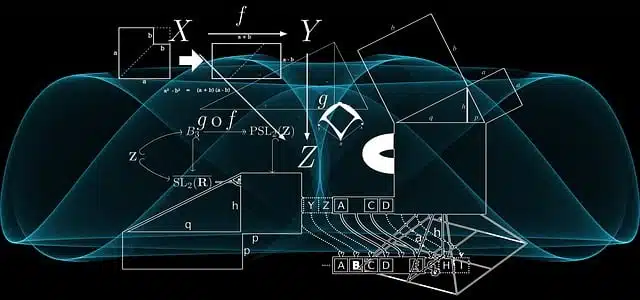
Linear algebra began to be developed in the 1840s.
Algebra is the branch of mathematics that is aimed at the generalization of arithmetic operations through signs, letters and numbers . In algebra, letters and signs represent another entity through symbolism.
Linear , for its part, is an adjective that refers to what is linked to a line (a line or a succession). In the field of mathematics, the idea of linear refers to that which has consequences that are proportional to a cause.
What is linear algebra
The specialization of algebra that works with matrices , vectors , vector spaces and linear type equations is known as linear algebra. It is an area of knowledge that was developed especially in the 1840s with the contributions of the German Hermann Grassmann (1809-1877) and the Irish William Rowan Hamilton (1805-1865), among other mathematicians.
Vector spaces are structures that arise when recording a non-empty set, an external operation, and an internal operation. Vectors are the elements that are part of the vector space . As for matrices, it is a two-dimensional set of numbers that allow the representation of the coefficients that systems of linear equations have.

William Rowan Hamilton and Hermann Grassmann are two of the mathematicians who contributed to the progress of linear algebra.
The contributions of William Rowan Hamilton
William Rowan Hamilton is one of the most prominent names in the field of mathematics, since he was the one who coined the term vector, in addition to having created quaternions. This concept extends from real numbers , as well as complex numbers, and these are groups of four numbers that are very useful when studying quantities in three dimensions that expect to have a magnitude and a direction.
The numbers that make up the quaternion must satisfy certain rules of addition, multiplication and equality . This discovery had considerable importance for mathematics. With respect to the set of real numbers, it is defined as the one in which the rational numbers (zero, positive and negative) and the irrational numbers (those that cannot be expressed) are found.
Linear algebra and systems of equations
Continuing with the definition of the elements that linear algebra deals with, it is important to know that a system of linear equations is composed, as its name indicates, of linear equations (a set of equations that are of the first degree), defined on a commutative ring or a body.
Vector spaces, the focus of the study of linear algebra, have two sets: one of vectors and another of scalars. Scalars are elements of mathematical bodies that are used to carry out the description of a phenomenon with magnitude, although without direction; It can be a real, complex or constant number.
In linear transformations, vectors are not always sequences of scalars; It is also possible that they are elements of any set. So much so that a vector space can emerge from any set over a fixed field.
Other considerations
Another point of interest in linear algebra is the group of properties that appears when additional structure is imposed on top of the vector spaces; A very frequent example of this occurs when an inner product is presented, that is, a kind of product between a pair of vectors, which gives rise to the introduction of concepts such as the angle formed by two vectors or their length. .
It is correct to say that linear algebra is an active area that is connected with many others, some of which do not belong to mathematics, such as differential equations , functional analysis , engineering , operations research and computer graphics. . Likewise, areas of mathematics such as module theory or multilinear algebra have been developed from linear algebra.
